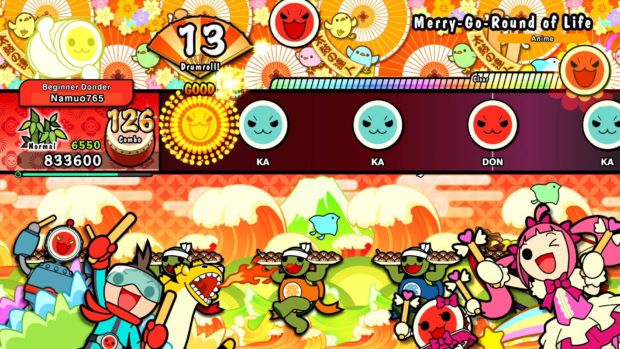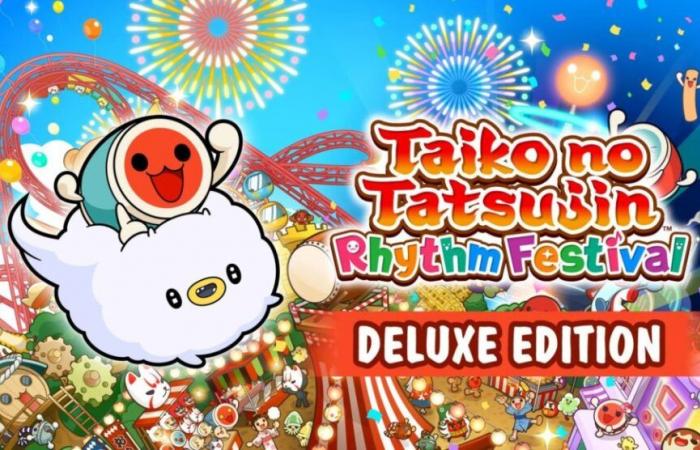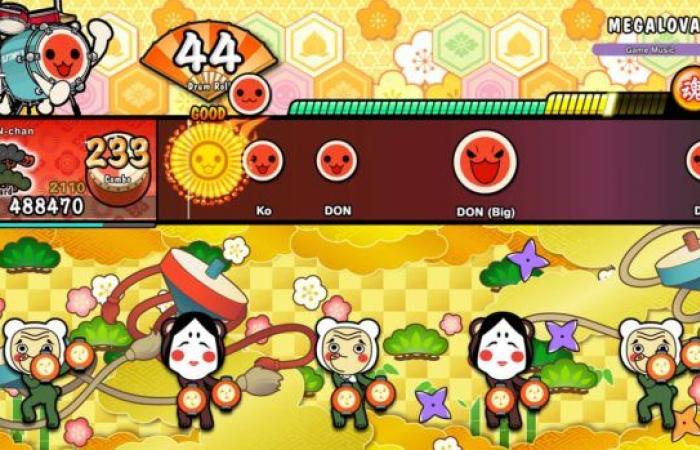After the successful Drum ‘n fun, the Taiko no Tatsujin series returns with a new episode called Rythm Festival.
Musical games are popular again. Namco Bandai understood this well and delivered us a second Taiko no Tatsujin on PC and consoles in the space of 10 years. The previous part, Drum ‘n fun, had succeeded quite well, particularly on Switch, with its little drum. With Rythm Festival, Namco Bandai delivers an opus simultaneously on all machines. And quite a few new things await the faithful…
Before going any further, however, it is appropriate to return to the very particular concept of this game, which is presented as a musical game in which the player must beat rhythmically on his drum – either using a drum in plastic, or with the pad.
Most of the game is based on Taiko mode, a sort of training mode which also serves as a solo mode. The player chooses their piece, the difficulty, and off they go. The higher the difficulty, the more complexity there will of course be in the gameplay. Generally speaking, however, you will have to tap in rhythm with your sticks or your fingers, performing sequences and sometimes letting yourself take off in an infernal solo to accumulate as many points as possible. The playing experience will be very different if you play it with a drum or a pad – which is obviously a lot less fun.
Apart from Taiko mode, there is a multiplayer mode and a party game mode. In this one we find some very nice challenges like duels in which performing sequences will allow you to lower your opponent’s life bar. Friendly. By default the game offers around seventy songs, which can seem quite enormous… However, you should know that the songs are in reality more very short extracts and above all the playlist is essentially made up of songs made in Japan which are absolutely not known to us, even some pieces of classical music and re-orchestrated game music. A typically otaku playlist which works for a few minutes, but which we get tired of very quickly… And this is also intentional since this episode introduces a paid pass as well as DLC which considerably expands the playlist and which is overall much more visible interesting since we find songs from Hatsune, playlists from Ghibli films, or the soundtracks of the most popular anime… It’s still a shame not to benefit from it by default in the sense that to really enjoy this game , it will be necessary absolutely checkout for additional content of significantly higher quality… The good news is that by purchasing the game, you will be entitled to 7 days of free access to the pass.

For the rest, it remains in line with the previous parts with a very accessible game system, a very colorful artistic direction, a good sense of rhythm and lots and lots of fun alone or with others. Be careful though, once again we insist on the fact that to enjoy this type of game, you absolutely need the accessory that goes with it, on the pad, that doesn’t make a lot of sense…
Conclusion
Taiko no Tatsujin: Rhythm Festival stands out as a very good musical game in continuity with the previous parts of the series. It should preferably be played with the official accessory – and not the controller, in which case the game has little interest. The concept remains the same: tap rhythmically with your sticks to string together the right notes. It’s fun, accessible and very colorful. This 2024 vintage also includes a very successful multiplayer mode and above all a music pass which makes the playlist much more interesting. Overall, we can criticize this episode for two big flaws: a lack of diversity in terms of game modes (more mini games would not have been too much!) and the fact that to have fun, you really have to go through the music pass or paid DLC, the basic playlist being very uninteresting…
_
Follow Geeko on Facebook, Youtube and Instagram so you don’t miss any news, tests and good deals.
Receive our latest news directly on your WhatsApp by subscribing to our channel.
Taiko no Tatsujin: Rhythm Festival
We like:
Fun with chopsticks
Multiplayer
The music pass which adds a bunch of very successful songs
Still a funny concept
We like less:
The basic playlist, disappointing
Few mini games
Slightly light content by default








